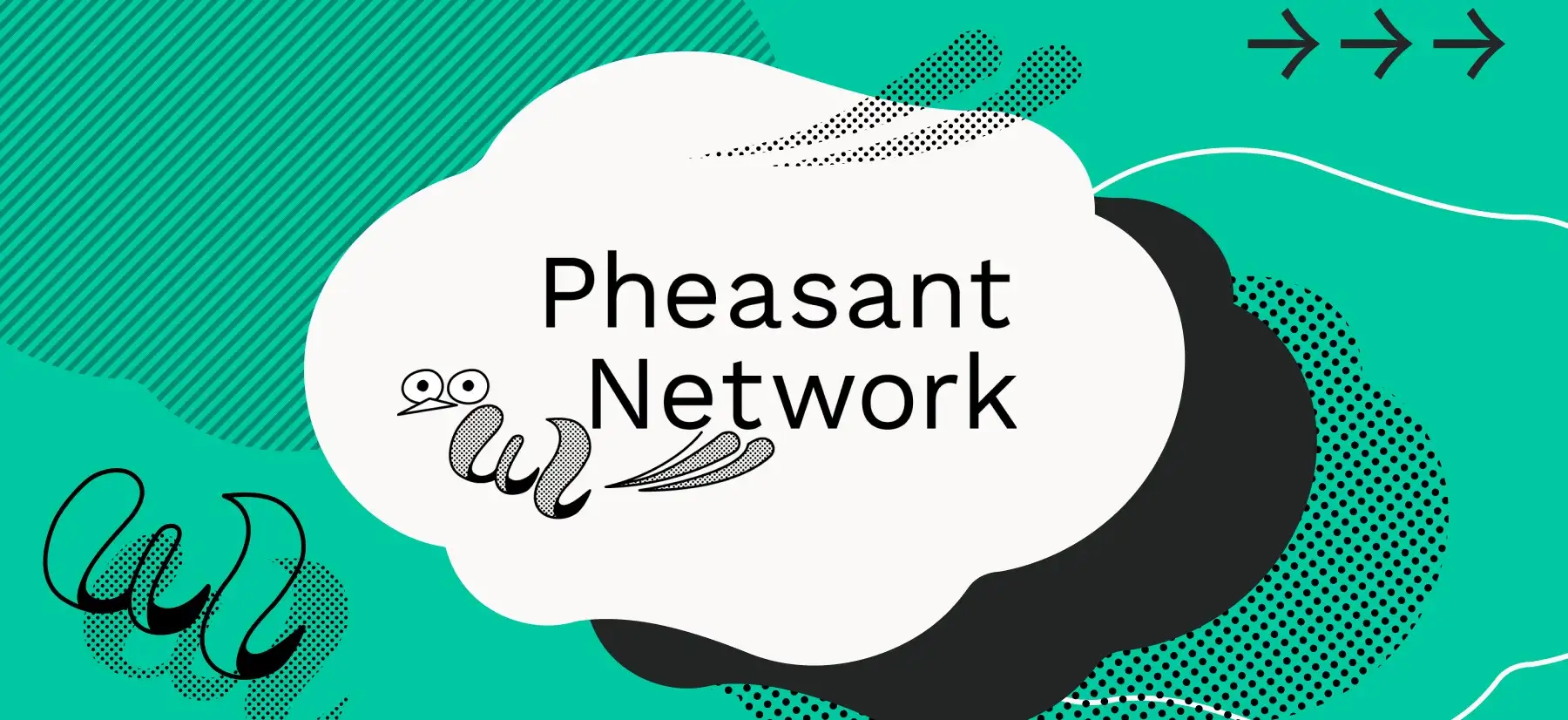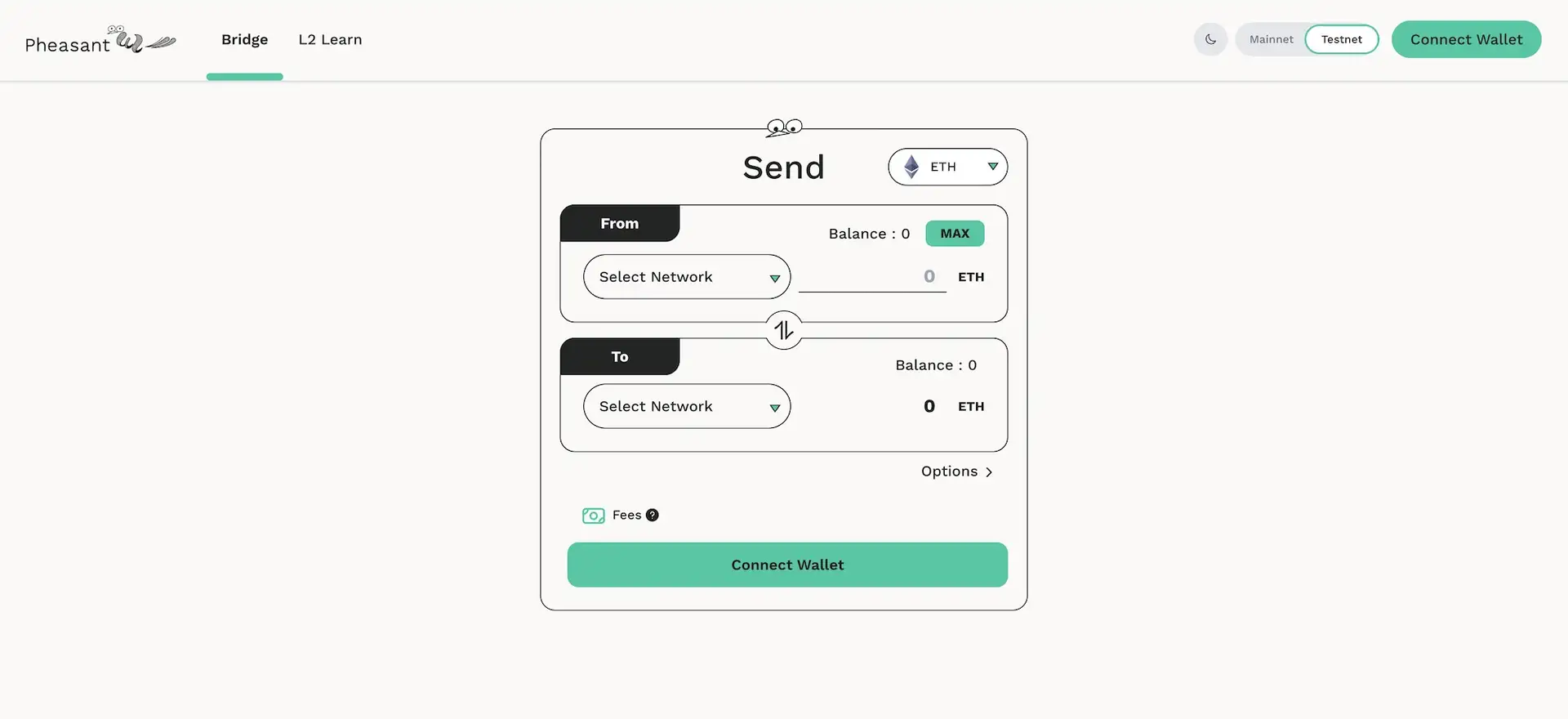About Pheasant Network
Pheasant Network is an innovative optimistic bridge network that leverages the concept of optimistic rollups to address the challenges of interoperability and scalability within the Ethereum ecosystem. By implementing a new type of bridge architecture, Pheasant Network offers a secure, decentralized, and cost-effective solution for asset transfers between Ethereum and Layer 2 networks. The platform's mission is to contribute to the development of the decentralized blockchain ecosystem by providing a sustainable and community-driven infrastructure. With a focus on reducing gas fees and enhancing security, Pheasant Network aims to create public goods that are both valuable and accessible worldwide.
The platform's approach is deeply rooted in the principles of decentralization, ensuring that no single central entity controls the network. Instead, the protocol relies on a decentralized liquidity model facilitated by relayers, who provide liquidity for asset transfers. This design not only enhances security by minimizing human errors but also ensures that the system remains resilient and resistant to potential hacks. Through its innovative architecture and commitment to decentralization, Pheasant Network is poised to make a significant impact on the Ethereum ecosystem and the broader blockchain space.
Pheasant Network is a cutting-edge bridge protocol inspired by the concept of optimistic rollups, designed to address the critical issues of scalability and interoperability in the Ethereum ecosystem. The platform introduces a novel architecture known as optimistic bridges, which optimizes the process of bridging transactions by processing them "optimistically." This means that the protocol only requires verification of transactions that appear suspicious, drastically reducing the gas fees associated with token bridges.
In traditional bridge systems, all transactions must be verified by the Layer 1 chain, which can lead to significant delays and high costs. Pheasant Network circumvents these issues by adopting an optimistic approach, ensuring that only potentially invalid transactions are checked at the Layer 1 level. This approach not only reduces costs but also enhances the speed and efficiency of asset transfers between Ethereum and various Layer 2 networks.
One of the standout features of Pheasant Network is its commitment to decentralization. The platform operates without a central controlling entity, instead relying on a network of relayers who provide the necessary liquidity for transactions. These relayers are required to deposit assets as a bond, which is only temporarily locked in the protocol's contracts. This ensures that relayers maintain control over their assets while still contributing to the network's liquidity. By decentralizing liquidity, Pheasant Network enhances the security and resilience of the protocol, reducing the risk of hacks that have plagued other bridge systems.
Compared to other bridge protocols, Pheasant Network's focus on decentralized liquidity and optimistic processing offers a unique and innovative solution to the challenges faced by the Ethereum ecosystem. While other projects like Optimism and Arbitrum have made significant strides in Layer 2 scalability, Pheasant Network's approach to bridge architecture sets it apart as a leader in the space.
- Optimistic Bridges: Pheasant Network uses a unique optimistic bridge architecture that processes transactions optimistically, requiring Layer 1 verification only for suspicious transactions. This reduces gas fees and improves transaction speed.
- Decentralized Liquidity: The protocol relies on a network of relayers who provide liquidity for asset transfers. This decentralized approach enhances security by minimizing human errors and reducing the risk of hacks.
- Scalability: By leveraging optimistic rollup technology, Pheasant Network significantly improves the scalability of Ethereum-based applications, enabling faster and cheaper asset transfers across multiple Layer 2 networks.
- User Control: Relayers maintain control over their assets while participating in the network, as their assets are only temporarily locked in the protocol’s contracts. This ensures that participants have the flexibility to manage their liquidity.
- Security Focus: The platform’s architecture is designed to be resistant to human errors and attacks, making it one of the most secure bridge solutions in the blockchain space.
- Community-Driven: Pheasant Network is a community-driven project, with a focus on creating public goods that benefit the broader blockchain ecosystem.
- Create an Account: Visit the Pheasant Network website and connect your Web3 wallet. The platform supports popular wallets like MetaMask and WalletConnect. Ensure that your wallet is configured correctly for interaction with decentralized applications (dApps).
- Explore the Platform: Once your wallet is connected, you can navigate through the platform’s interface to familiarize yourself with its features. Take time to understand the different functionalities, such as asset bridging and liquidity provision.
- Initiate a Bridge Transaction: To transfer assets between Ethereum and a Layer 2 network, select the assets you want to bridge, specify the destination network, and initiate the transaction. The platform’s optimistic processing will handle the rest, ensuring a smooth and cost-effective transfer.
- Participate as a Relayer: If you want to contribute liquidity to the network, you can participate as a relayer by depositing assets into the protocol. These assets will be temporarily locked in the protocol’s contracts, but you will retain control and can withdraw them after a specified period.
- Stay Informed: Keep up with the latest updates and developments by visiting the Pheasant Documentation and joining the community channels. Engaging with the community is a great way to learn more about the platform and contribute to its growth.
For more detailed information and tutorials, please visit the Pheasant Network Documentation.
Pheasant Network Reviews by Real Users
Pheasant Network FAQ
Pheasant Network enhances scalability by utilizing an optimistic bridge architecture, which processes transactions optimistically. This means that only potentially suspicious transactions are verified on the Layer 1 chain, reducing the overall processing time and lowering gas fees.
In Pheasant Network, relayers are crucial participants who provide liquidity for asset transfers. They deposit assets as a bond, which temporarily locks them into the protocol's contracts, ensuring liquidity without relinquishing control over their assets.
Pheasant Network ensures security through its decentralized liquidity model and optimistic transaction processing. By relying on a network of decentralized relayers and verifying only suspicious transactions, the protocol minimizes risks associated with human errors and potential hacks.
Yes, as a relayer on Pheasant Network, you maintain control over your assets. The assets you deposit are only temporarily locked in the protocol's contracts, allowing you to withdraw them after a specified period.
Optimistic processing in Pheasant Network reduces gas fees by only requiring verification of transactions that appear suspicious. This means fewer transactions are processed on the Layer 1 chain, significantly lowering the costs associated with token bridging.
You Might Also Like












